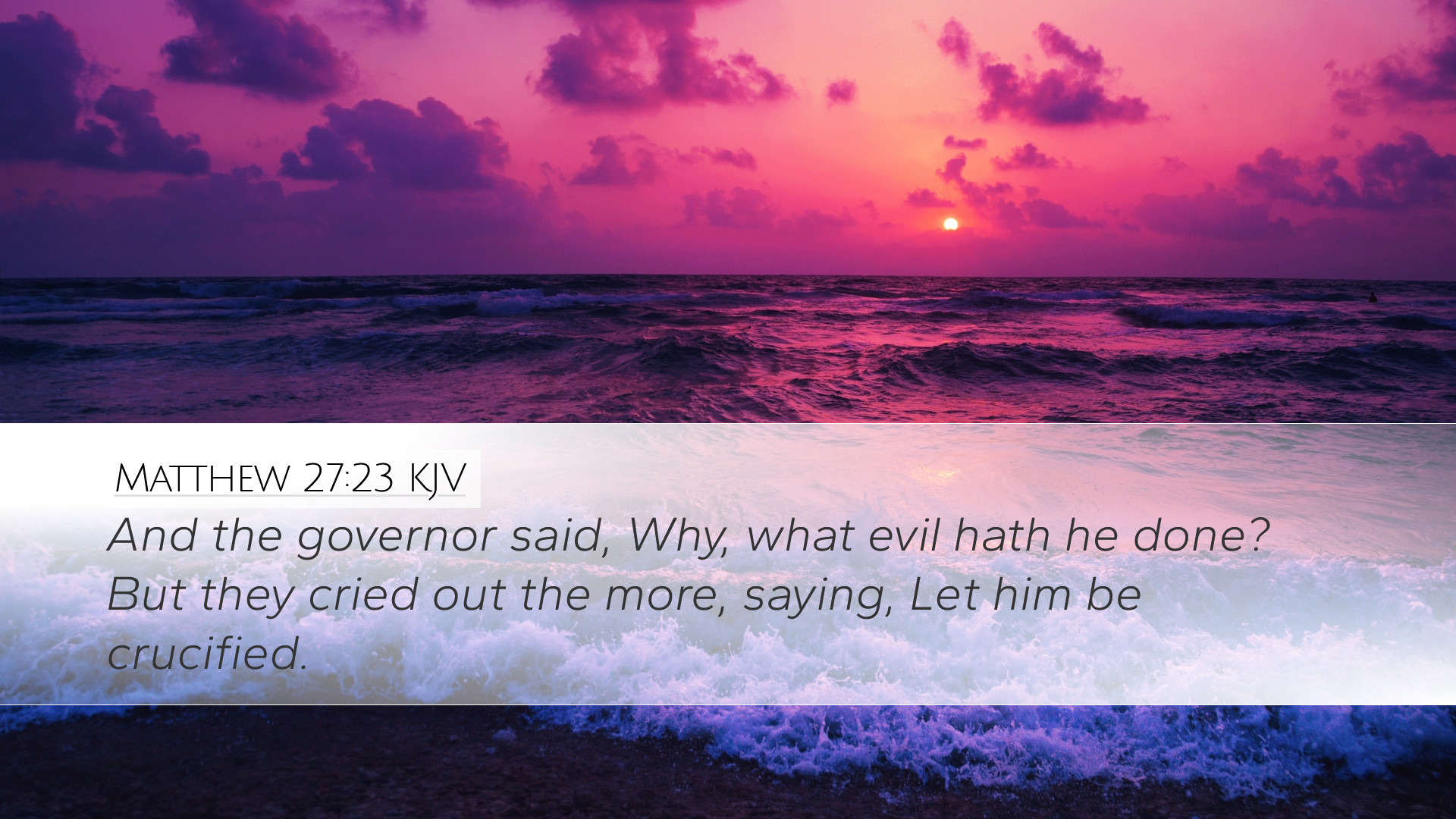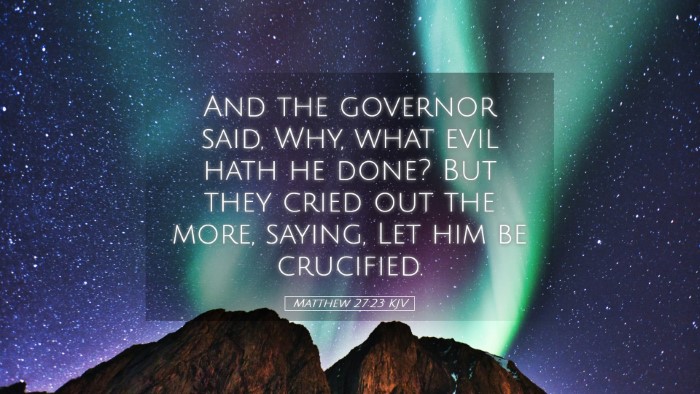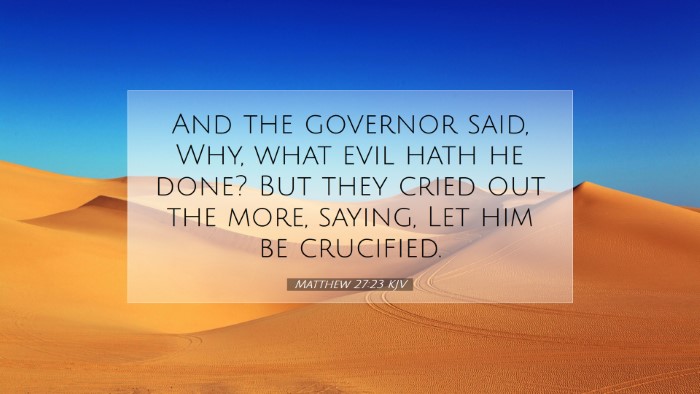Commentary on Matthew 27:23
Verse: "But the governor answered and said, 'Why? What evil has He done?' But they cried out all the more, saying, 'Let Him be crucified!'"
Introduction
This verse, situated in the climactic narrative of Jesus' trial before Pilate, captures a critical moment in the Passion account. It highlights the tension between civil authority and the fervent outcry of the crowd. The insights from renowned public domain commentaries provide depth and context to this verse for scholars, students, and pastors alike.
Context and Background
In the lead-up to this declaration, Jesus has been arrested and brought before the Roman governor, Pontius Pilate, the representative of secular authority. It is significant to note that Pilate, despite being a Roman official, shows a degree of reluctance to condemn Jesus without clear evidence of wrongdoing.
Insight from Matthew Henry
Matthew Henry, in his commentary, emphasizes Pilate’s role as a judge who seeks to understand the charges against Jesus. He highlights that Pilate's question, "What evil has He done?" reflects his awareness of Jesus's innocence. Henry notes that this moment illustrates the blindness of the people to justice, illustrating a profound moral failing within the crowd. Henry asserts that even in the face of clear injustice, public sentiment can drive harsh outcomes, a message that resonates with both contemporary and historical audiences.
Albert Barnes' Perspective
Albert Barnes observes that Pilate’s inquiry implies a search for truth amid an overwhelming clamoring for blood. He points out that Pilate's question serves a dual purpose: it underscores the innocence of Jesus while simultaneously exposing the guilty conscience of the crowd. Barnes elaborates that the insistence of the mob to crucify Jesus exemplifies the theme of rejection—a core aspect of Jesus’ ministry as He brought a message that challenged established norms and authority. This commentary delves into the psychological aspect of the crowd, suggesting the powerful influence of public opinion over rational thought.
Adam Clarke’s Analysis
Adam Clarke offers a detailed exegesis of the text, connecting it with the prophetic implications of Jesus' suffering. He notes that the governor’s hesitation to acquiesce to the demands of the people signifies a pivotal moment between divine justice and human will. Clarke reminds readers of the scriptural prophecies regarding the Messiah's rejection, making this moment integral to understanding the overarching narrative of salvation history. He emphasizes that Pilate, despite his position of authority, is portrayed as ultimately powerless against the fervent demands of the crowd.
Theological Implications
- Innocence and Guilt: This verse speaks to the judicial integrity that Pilate struggled to maintain and the degree to which societal pressures can distort justice. It invites theological reflection on the nature of sin and the human propensity to reject righteousness.
- Public vs. Private Morality: The fervor of the crowd raises questions about collective responsibility and the morality of the masses. It challenges leaders today to consider how they stand in the face of popular opinion that contradicts moral truth.
- The Prophetic Role of Christ: This moment highlights the fulfillment of scripture and the mission of Jesus as the suffering servant, offering a profound understanding of redemption rooted in the very rejection he faced.
Application for Today
For pastors and theologians, this passage serves as a stark reminder of the challenges of leadership in a polarized world. It compels one to uphold the truth of the Gospel amid overwhelming opposition. Additionally, for students of the Bible, it demonstrates the intersection of history, prophecy, and the human experience of faith amidst trials. The combination of Pilate's inquiry and the crowd's utter rejection invites reflection on the nature of faith and the cost that often accompanies it.
Conclusion
Matthew 27:23 encapsulates a moment of profound significance within the Passion narrative, urging readers to consider the dynamics of justice, the weight of public opinion, and the role of prophetic destiny. The combined insights of Henry, Barnes, and Clarke enrich our understanding of this pivotal event, allowing us to grasp its implications both in the immediate context of Christ’s crucifixion and in our contemporary landscape of faith and ethics.


